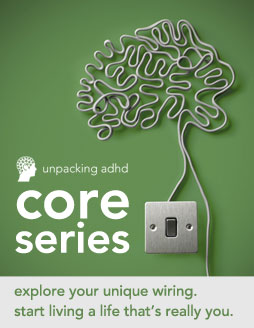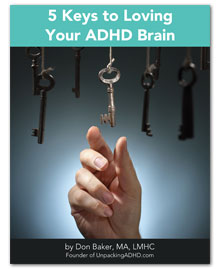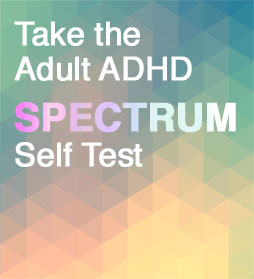I’ve met with 16 year old Jesse four times. Dad comes with Jesse to my office and attended the first two meetings. I can tell that Dad is very concerned about Jesse – “he’s not mainstreaming well with his peers, high emotional EQ manifesting in hurt feelings, feeling defeated, and considerable social anxiety.”
Did I mention that Jesse has tested off the charts on standardized tests but his GPA is a 2.5? Oh, and he was diagnosed ADHD six months ago.
In the second session, I thought there’d be value in running the idea of neurodiversity by Jesse.
What is Neurodiversity?
Thomas Armstrong, PhD defines neurodiversity as “an idea which asserts that atypical (neurodivergent) neurological development is a normal human difference that is to be recognized and respected as any other human variation.”
Psychology Today ran an interesting piece called Disease, Disorder, or Neurodiversity: The Case of ADHD in which author Marc Lewis PhD states “many scientists believe that a certain amount of psychological diversity is built into the human race because it provides an evolutionary advantage for all of us. This built-in diversity in brain plans — or neurodiversity — has often been linked with genetic variation.”
He concludes by saying “the psychological qualities of a genetic distinction can’t be defined or labeled in a vacuum. The advantages or disadvantages of that distinction can only be described in context.”
A lot of big words, I know, but the gist is that differences in neurology don’t have to be automatically labeled as bad or wrong or disordered. They are a normal part of the human spectrum. This is so refreshing and revolutionary — and sadly so different from what most people think when they start recognizing ADHD traits in themselves or get an ADHD diagnosis.
The Advantages of a Neurodiversity Approach
I’ve been working primarily with those of us who are “other wired” for nearly 20 years, and I know that variations in brain wiring come with both strengths and challenges. This is a huge theme in my Adult ADHD classes. Just because your brain is wired differently, doesn’t mean you need to “fix” it or try to make it “normal.” It is what it is. The path is to understand it, accept it, and work to leverage your strengths and manage your challenges.
In that second session with Jesse, I noticed his mood shift abruptly. The concept of neurodiversity made sense to him. He told me that he felt, for the first time since he’d been diagnosed, like there was a path he could navigate.
Context and Calla Lilies
The even bigger and truly revolutionary message of a neurodiversity approach is recognizing that variation can be positive in and of itself. It moves away from labeling people in a vacuum. Instead, as Lewis says in his piece, ADHD is “a genetic distinction that can only be described in context.”
In The Myth of The Normal Brain: Embracing Neurodiversity, Thomas Armstrong, PhD quotes Harvey Blume: “Neurodiversity may be every bit as crucial for the human race as biodiversity is for life in general. Who can say what form of wiring will prove best at any given moment?
Armstrong goes on to ask: “How absurd it would be to label a calla lily as having ‘petal deficit disorder’ or to diagnose a person from Holland as suffering from ‘altitude deprivation syndrome’?”
What Do You Think?
Where do you stand when it comes to defining the threshold from “normal” to pathological? What is disease, disorder, or neurodiversity? I’m very interested to know. Please share your thoughts in the comments.
I’ve been leading groups for adults living with the traits of ADHD for more than 15 years. I am a licensed counselor in the state of Washington, and I received my own diagnosis of ADHD in 1997. I am passionate about sharing cutting edge information about ADHD wiring and helping people with ADHD connect with others in their “tribe.”






I really don’t like the word normal. To me it is very suggestive. It seems like a way to force people into a predefined mold for their own purposes. One person’s normal/average is another person’s strange. Most of the time if people want to make a point they will pull a statistic to make a comparison to make a point or show an example.
I have heard the statistic that the average family has 2.5 children but have you ever met that family? I have met families with two children and other families with 3 but I have never met the elusive yet normal family that has 2.5 children, have you? So long story short, normal is what the statisticians and marketers want normal to be and what we all end up believing as a result of that. For me, normal is what every body else is. In most situations I often feel like the odd one out.
As for my definition of pathological, I define that as something that actually harms a person physically, mentally or causes a negative disruption in a person’s ability to live and work in a constructive manner (e.g. stay employed, keep the rent paid and the utilities on).
I think the term neurodiversity is not just a more positive description of people with ADHD or any other cognitive difference but a more accurate term as well. Positive and negative labels are often very subjective.
On a side note today’s neurodiversity may be tomorrow’s ‘normal’. In my opinion, our brains must change in order to deal effectively with our changing technology. Technologies like virtual reality will rewire our brains. Because of the technological progress that has occurred in the last few decades, our brains have had to learn to cope with information overload and stimulus overload (e.g. cell phone ringing while driving) in order to function.
I often think that people with ADHD brains are neuropioneers. Our brains are simply ahead of the times.
I concur.
Here’s the thing. I don’t like being “different”. I don’t like feeling misunderstood. I don’t like that my feelings are hurt all the time. I don’t like being me. I’ve seen quotes from people who say that if they had a choice between having ADHD and not having it, they’d chose to have it. Based on the pain and hurt it’s caused me and the people I love over the years, there is no way I would chose having it. Not in a million years. Not for a million dollars.
Elizabeth – it’s been awhile since you posted here but after rereading your post, I thought I’d comment briefly to say that I appreciate your words – how honest you are about not seeing “differentness” as something that’s valued and that’s valuable. I’ve run into many of us over the years that feel similarly – just want you to know that you’re not alone.
Amen to that, I was diagnosed at age 38 and now that I am understanding it and how it affects me, I would never wish to have this!
Thanks for taking the time to comment on this post, Joleen.
I think there’s a fine line between accepting different-ness as good and ignoring real problems. My husband was diagnosed with ADHD a year before I was, and if someone had tried to talk to me about neurodiversity then, I would have punched them in the face. His untreated ADHD was causing real problems in our household, and I was the one up late at night cleaning up the messes. (We figured out later that we had a parent-child relationship going two ways – I babysat him logistically, and he babysat me emotionally.) Now that I finally got diagnosed (on my FIFTH doctor!), I see both the benefits and the drawbacks of ADHD. I definitely feel like it’s a disorder in my case because I can tell I’m under-achieving, I’m really stressed out, I know my emotional overreactions are stressful for my husband, and I am disappointing people on things that I actually really did want to do. But I think it’s great to embrace the idea that we don’t all have to think exactly alike. I’ve worked in plenty of corporate jobs where the company would have been way better off if they had listened to me instead of trying to force me to do things the same way as everyone else. And my husband, frustrating though he can be, is one of the sweetest and most creative people I’ve ever met. He’s 8 million times more adaptable than anyone else I dated. He was great with my 95 year old grandmother, better than I was, and he even stayed with me and my parents when she passed away. So he definitely doesn’t need to be just like “everyone else” – NO THANKS.
Alison-thanks very much for taking the time to post and for sharing your story. I smiled when I just read “…if someone had tried to talk to me about neurodiversity then, I would have punched them in the face.” I get it. Probably would have been true for me early in my understanding of ADHD and early in my relationship (we’re both ADHD too). Man, have I learned a lot and it sounds like you have as well. One of the biggest pieces is understanding how significantly our wiring / brain influences behavior, the impact behavior (in this case due to untreated / treated ADHD) has on relationships, and the mis-attributions we’ll often make without that understanding. Best regards, Don
As stated in one of my favorite musicals, “Normal is a myth.” My ADHD is a large part of me. Not something to be overcome or cured, but something that provides me with my own strengths and challenges.